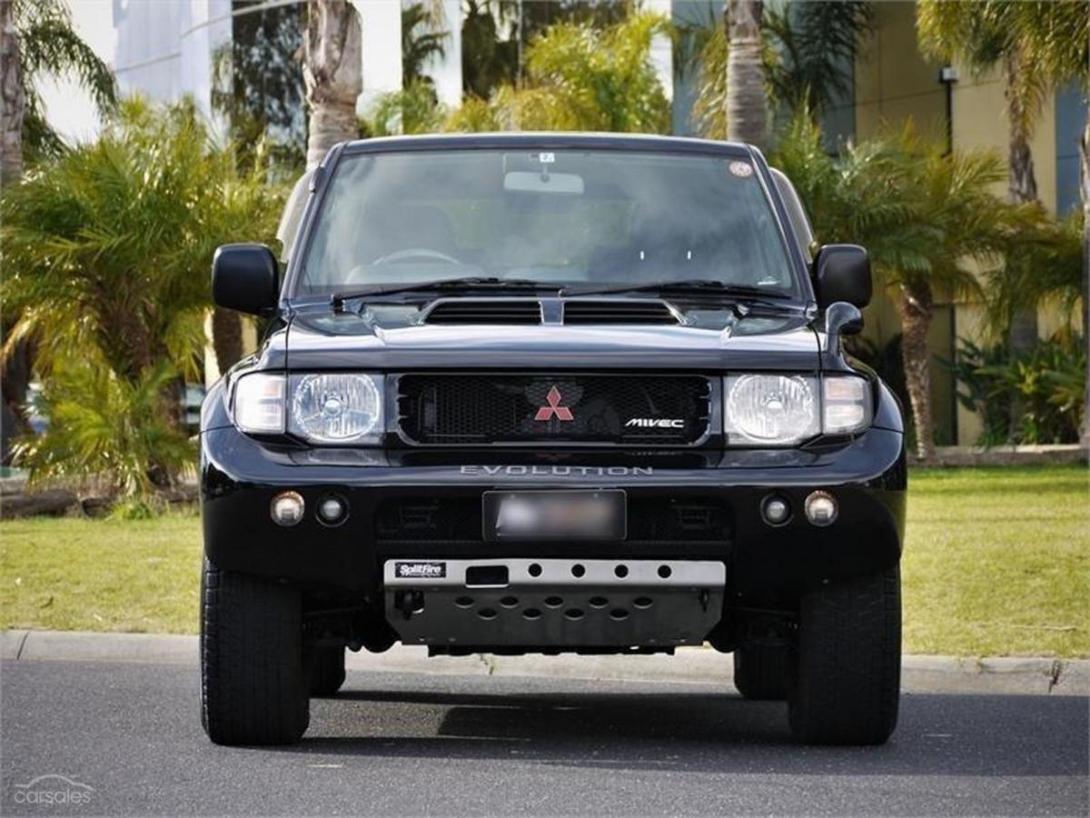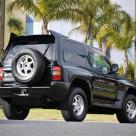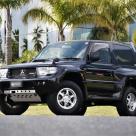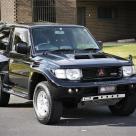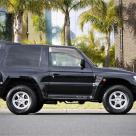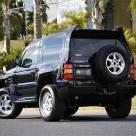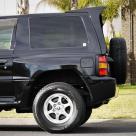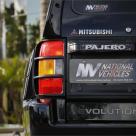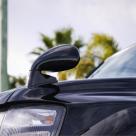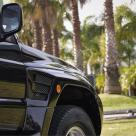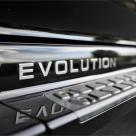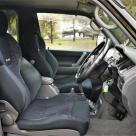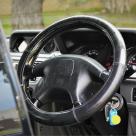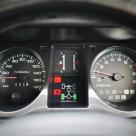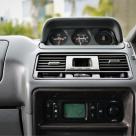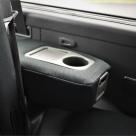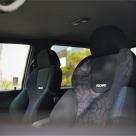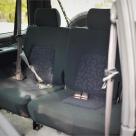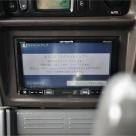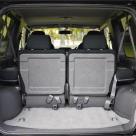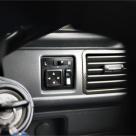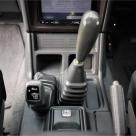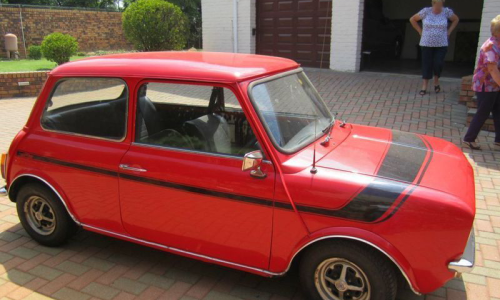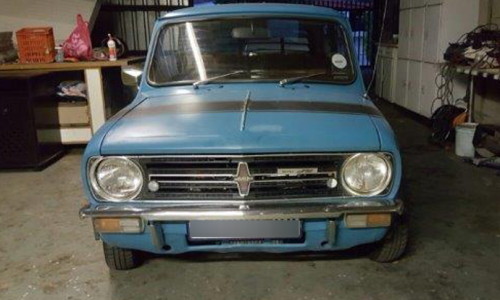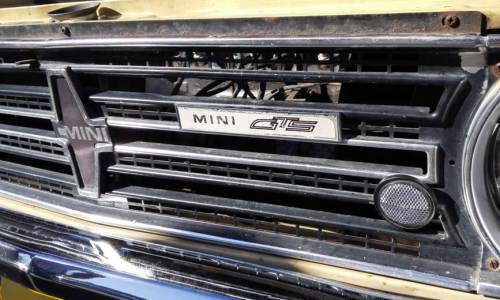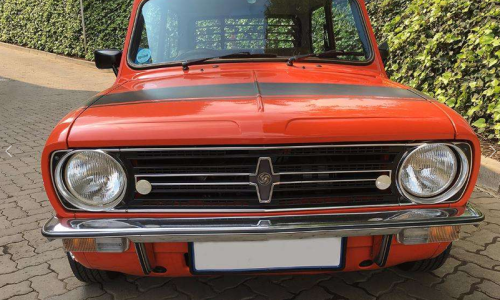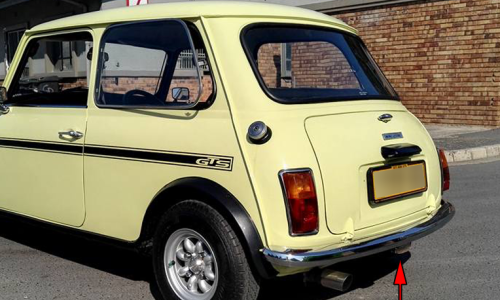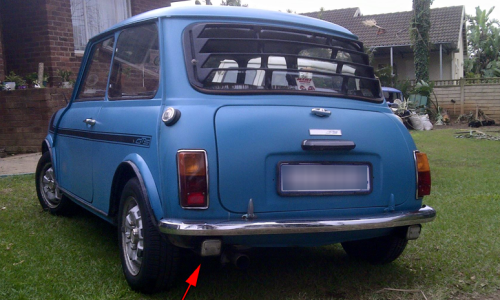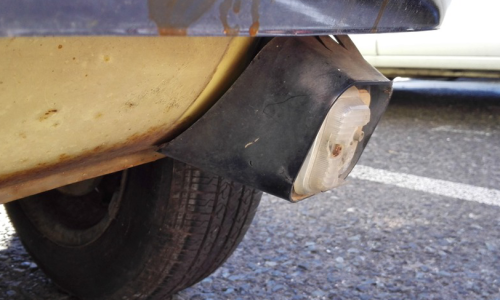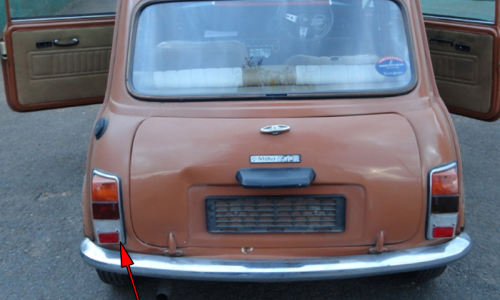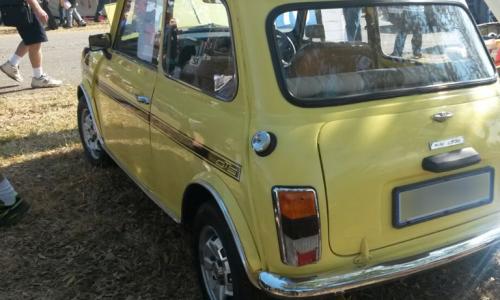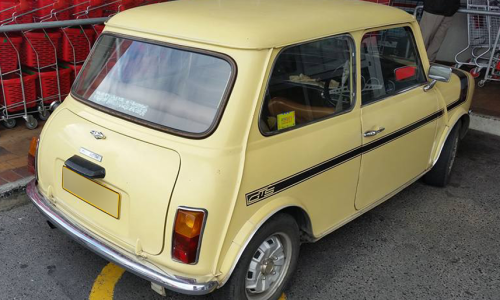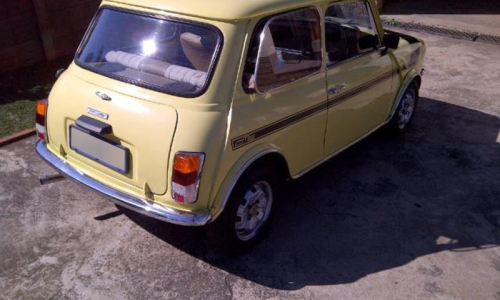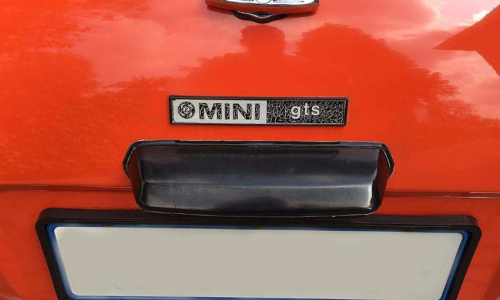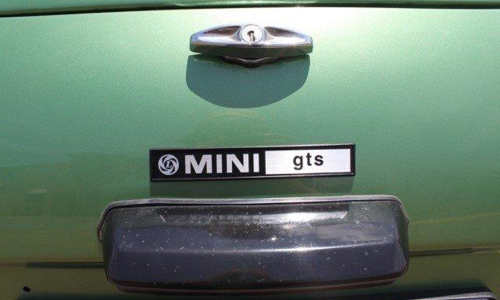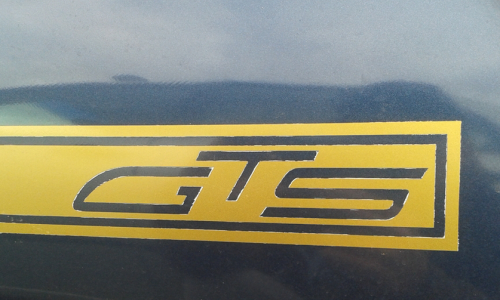For sale: 1997 Evolution Pajero Mitsubishi
Specifications
The GTS was based on the MK3 body shell as shared with the Mini 1275 GT it replaced.9 This body featured internal door hinges, and all GTS models were fitted with the 'square front' design. A number of cosmetic changes were made to the accessories applied to the GTS at multiple points throughout the production period, and these changes have been summarised in this section.
- The GTS was available in a large number of single tone colours, with contrasting body stripe decals that run over the bonnet and down the sides of the car with “GTS” script integrated in the decal at the tail ends. We have not found any information suggesting these were a 'delete option' and therefore the assumption is that they were applied to all GTS vehicles. Decals were available in Gold, Silver or Black (depending on the paint colour of the vehicle.10 These decals had two thin outer stripes (5mm) and one central inner-stripe (32mm) down the side of the vehicle, stretching to a total width of 165mm as it ran over the front guards and bonnet.11 These were similar to but not the same as those applied to the Australian Clubman GT. See section 3 of this guide for further details regarding the available GTS decals and stripes.
- Wheel arch flare support panels were spot-welded to the wheel arches, covered with plastic flares and a PVC chrome-plastic finishing strip was applied over the seam, held on by body tabs.
- Front bumper under-riders were fitted to all cars.12
- Some vehicles (dates unconfirmed) had a small square Leyland badge applied to the lower A pillar, behind the front wheel arch. This was not applied to all vehicles, and we note that we have sighted both early and late vehicles which have not had the badge fitted. None of the vehicles sighted during our research from 1976 onward have been fitted with this badge, but further sampling is needed to make a firm conclusion.13
- A lockable fuel cap was introduced in July 1975.14
- Semi-sealed halogen headlamps were introduced on the GTS in July 1975.15
- A tinted and laminated windscreen was introduced from April 1977, along with a rear window made from toughened glass.16
- For the 1979 model year vehicles, wiper blades and arms were painted matt-black, and a black plastic roof line gutter finishing strip was fitted (earlier vehicle wiper blades were exposed stainless steel, and had no roof gutter trim applied). Further, the roof gutter design changed slightly for the final production year, with the drip strip that ran along the gutter being removed.17
Front grille:
- Two grille designs applied over the GTS production period. Both grilles were painted matt black, with exposed / unpainted aluminium frame sections. As with other South Aftican models, the grille received white circular reflectors. The design of each grille is explained below, with labelled images provided in the gallery for further description.
- Pre-April 197718 vehicles had a grille with the vertical shield shaped badge with "MINI" script cast at the top of the badge. The grille itself was painted matt black, whilst the outer rim of the frame, and two horizontal strips of the grille received a chrome like finish (exposed aluminium).
- April 1977 onward19 vehicles replaced the shield badge with a flat panel painted the same matt black as the grille, with an exposed aluminium frame in the centre. A small Leyland symbol was applied to the left of the "Mini" text on the badge panel - both of which stood out in aluminium finish on the black background. The grille design was slightly revised, retaining the matt-black centre finish with outer edge of exposed aluminium, but now applied the exposed aluminium finish to the centre horizontal bars through the middle of the grille, which flowed with the badge panel and frame.
- A square "Mini GTS" badge (the same as the early badges applied to the trunk lid) was applied to the passenger side front grille. This badge was fitted to both grille designs up to the end of August 1978, after which it was no longer applied. Prior to April 1977, this badge was placed on the lower half of the passenger-side grille,20 and from April 1977, it was fitted to the upper half of the passenger-side grille.21 See the examples in the images demonstrating the different positions.22
Side mirrors:
- Early cars, prior to April 1977, are believed to have not received a side mirror as standard, despite promotional material suggesting a 'bullit' style mirror was applied.23 A bullit mirror or other style may have been a dealer-fitted option on vehicles, however, we have no references to support this assumption.
- Cars from April 197724 through to September 1978 received a single chrome door mirrror on the driver's side.
- From September 1978 until production end, twin door-mirrors were applied and painted matt-black.25
Tail lights:
- Reverse lights fitted to vehicles prior to July 1975 are subject to debate. Several vehicles have been sighted with a centrally located reverse light in chrome housing fitted under the rear bumper.26 However, we have also received information from an owner who purchased a new GTS in 1973, confirming no reverse lamp was fitted. This could suggest the lamps may have been optional / dealer fitted items, and not standard equipment.
- Vehicles built between 1975 and April 1977 had black plastic reverse lamp pods fitted on the rear beaver/valance panel (under the rear bumper). These lamps were the same as those applied to the Leyland / Morris Marina.27
- Tail lights prior to April 1977 had small red circular reflectors fitted.28
- From April 1977 onward, the final iteration of the GTS saw the larger MK3 tail lamps installed which integrated a reverse lamp. These lamps also had an integrated square reflector, meaning the round reflectors applied to earlier models were no longer necessary.29
Wheels and tyres:
- Vehicles built prior to July 1975 had pressed steel 10 x 4.5 inch Rostyle wheels30 with 8 ventilation holes, fitted with 165 SR10 tyres. From July 197531 (to accommodate larger 8.4 inch disc brakes), all GTS vehicles were fitted with pressed steel 12 x 4.5 inch wheels. These were fitted with 145/70/12 tyres, and had plastic wheel covers with Leyland badged centre caps (these were the same wheel covers as applied to the post-1974 British 1275 GT, the Mini 25th Anniversary and the Australian Mini 1275 LS). The wheel nuts on these larger wheels were originally fitted with black plastic caps, and had special plastic washers fitted to retain the wheel covers.
Boot lid badging:
- A small square badge was applied to the rear trunk lid (centre) stating “Mini GTS”. The rear GTS badge received several design changes over time. Please note; the date of changeover has been estimated based on cars sighted during research. Should any readers have further information, please contact us.
- Early badge: Cars (possibly up to 1975) received an aluminium style badge with black “Mini" and red "GTS” text printed on top.
- Later badges: Cars from 1975/1976 onward had two possible badge designs. The first had Black “Mini” text over an aluminium background (left side) and a lower case Aluminium “gts” text over a black background (right side). The second badge has aluminium “Mini” text over a black background (left side) and lower case black “gts” text over an aluminium background (right side).
Vehicle location
Australia , VIC , Melbourne
When it comes to SWB 4x4s, nothing did it better than Pajeros in the 90s - particularly when taking into account their racing success at Dakar! These Evolution Pajeros have flooded the Australian market recently (when I say flooded, there are maybe 5 currently for sale whereas 5 years ago, there was just one in the country). I always though that these are really the ultimate Japanese import suited to the Australian conditions.. Although, I'd be hesitant to take it off road given the rarity and collectability..
So these are a homologation special, built at the end of the era where Homologation was a requirement to compete in motorsport (i.e., you had to build a certain number of road going versions in order to enter a car in a race - unlike anything we have in racing or rally today unfortunately..
This example is finished in black, which I presume is rare (I've only seen a few - most are in white, and some in red from memory).. This one was asking $80,000 AUD in October 2022 on carsales.com.au (offered by a dealer).
Check out the others here on the register.
